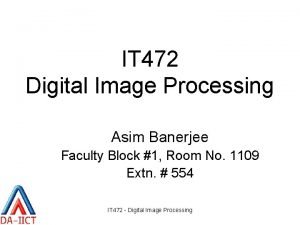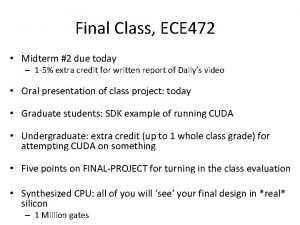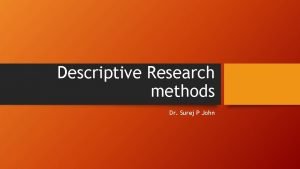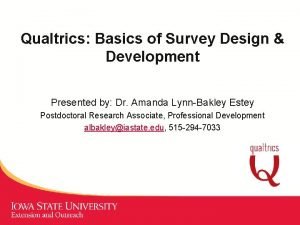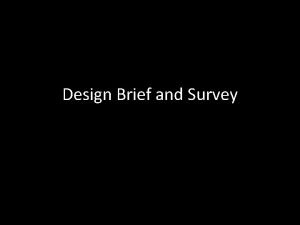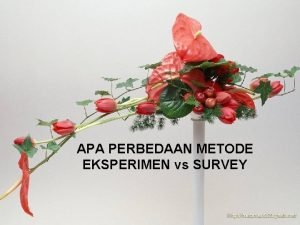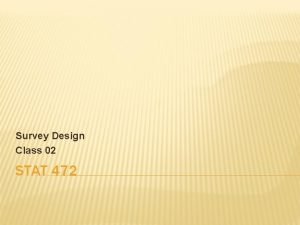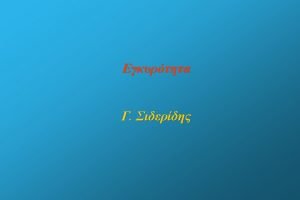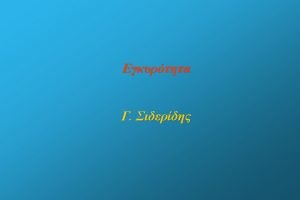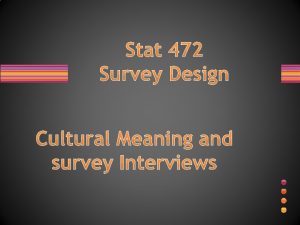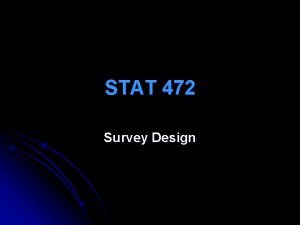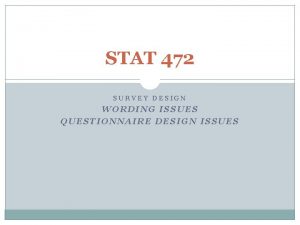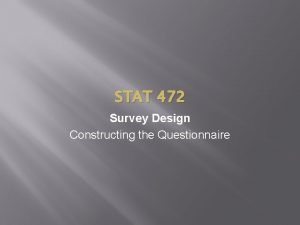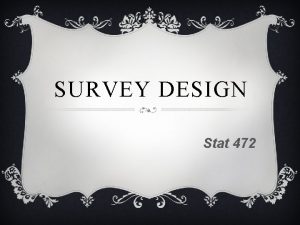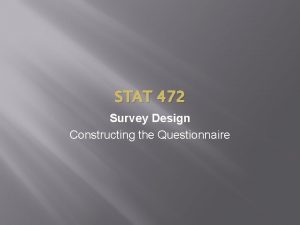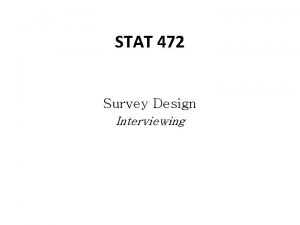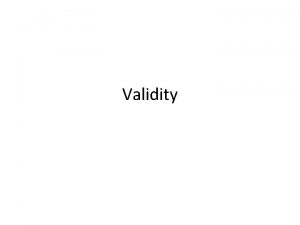Survey Design Class 02 STAT 472 VALIDITY It















- Slides: 15

Survey Design Class 02 STAT 472

VALIDITY � It is a true measure � Measurement Validity is the degree of fit between a construct and indicators of it. � It refers to how well the conceptual and operational definitions mesh with each others � The better the fit the greater the measurement

� When a researcher says that indicator is valid, it is valid for a particular purpose and definition. But less valid or invalid for others

EXAMPLE � Questions about feelings toward school � Valid: for measuring morale among � Invalid: for measuring morale of teachers police officers

TYPES OF MEASUREMENT VALIDITY � (1)Face Validity It is a judgment by the scientific community that the indicator really measures the construct

(2) CONTENT VALIDITY � Special � type of face validity is the full content of a definition represented in a measure?

CONTENT VALIDITY INVOLVES THREE STEPS: (1) Specify the content in a construct’s definition (2) Sample from all areas of the definition (3) Develop an indicator that taps all of the various parts of the definition.

(3) CRITERION VALIDITY � The validity of an indicator is verified by comparing it by another measure of the same construct in which a researcher has confidence

TWO KINDS OF CRITERION VALIDITY � (a) Concurrent: an indicator must be associated with preexisting indicator that is judged to be valid. Example: Create a new test to measure intelligence.

� (b) Predictive: Indicator predicts future events that are logically related to construct. Example: the Scholastic Aptitude Test (SAT): to measure the ability of a student in college; if the SAT has high predictive validity, the students who get high SAT scores will subsequently do well in college.

(4) CONSTRUCT VALIDITY � For � It measure with multiple indicators. has two kinds: (a) Convergent: Means that multiple measure of the same construct operate in similar ways

� (b) Discriminant: (Divergent Validity) It means the indicators of one construct are negatively associated with opposing construct.

OTHER USES OF THE TERM VALIDITY � (1) Internal Validity: means there are no errors internal to the design of the research project High internal validity means there are few errors

� (2) External Validity: It is the ability to generalize findings from a specific setting and small group to board range of setting and people High external validity means the results can be generalized to many situations and many groups of people.

� Statistical Validity: Means the correct statistical procedure is chosen and its assumptions are fully met
 Criterion validity vs predictive validity
Criterion validity vs predictive validity Scp 472
Scp 472 Nfpa 472
Nfpa 472 472
472 472
472 Ece 472
Ece 472 Cs 472
Cs 472 Ample abcde
Ample abcde Descriptive research design
Descriptive research design Descriptive method research
Descriptive method research Qualtrics survey design
Qualtrics survey design Cardinal survey and design
Cardinal survey and design Brief layout
Brief layout Perbedaan metode survey dan eksperimen
Perbedaan metode survey dan eksperimen Qualitative survey questionnaire example
Qualitative survey questionnaire example Ziua drapelului republicii moldova ppt
Ziua drapelului republicii moldova ppt




